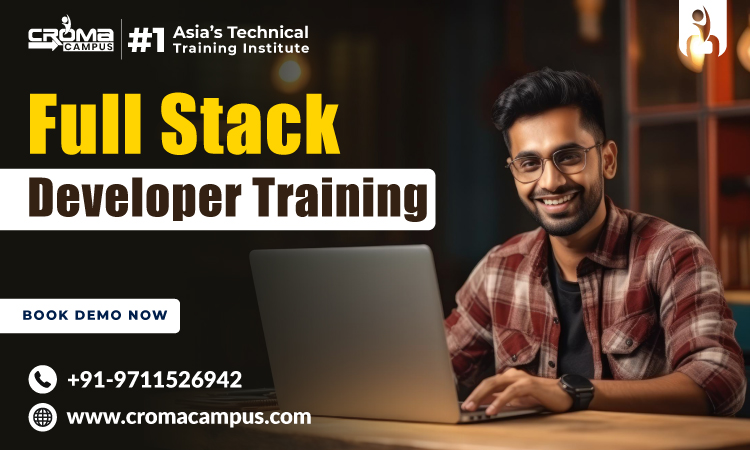Summary:
Full Stack Development refers to the process of building both the client-side (front-end) and server-side (back-end) parts of a web application. A Full Stack Developer is proficient in both front-end technologies like HTML, CSS, and JavaScript, as well as back-end technologies like Node.js, Python, or Java.
A Full Stack Development course might sound tough and confusing, but it’s all about learning how to build both the front-end and back-end of web applications. In this article, we’ll break down what a Full Stack Course entails, why it’s valuable, and key concepts involved, all in a way that’s easy to understand for everyone.
Why Pursue a Full Stack Development Course?
Versatility: Full Stack Developers have a wide range of skills and can work on both the front-end and back-end of web applications. This versatility makes them highly valuable in the job market.
Career Opportunities: Stack Development is in high demand, and companies are always looking for skilled developers who can handle all aspects of web development. Completing a Full Stack course can open doors to various job opportunities.
Understanding the Full Picture: By learning both front-end and back-end technologies, you’ll gain a deeper understanding of how web applications work and how to build them from start to finish.
What are the Key Concepts in Full Stack Development?
A Full Stack Development course is a comprehensive program that covers both front-end and back-end technologies, preparing you for a career as a Full Stack Developer.
1. Front-End Development:
· HTML: Hyper-Text Markup Language is used to structure web pages.
· CSS: Cascading Style Sheets are used to style the appearance of web pages.
· JavaScript: A programming language used to add interactivity and functionality to web pages.
1. Back-End Development:
· Server-Side Languages: Languages like Node.js, Python, Ruby, or Java are used to handle server-side logic and data processing.
· Databases: Technologies like MySQL, MongoDB, or PostgreSQL are used to store and manage data for web applications.
1. Frameworks and Libraries:
· Front-End Frameworks: Tools like React.js, Angular, or Vue.js are used to build interactive and dynamic user interfaces.
· Back-End Frameworks: Frameworks like Express.js (for Node.js), Django (for Python), or Spring Boot (for Java) provide a structure for building robust server-side applications.
1. APIs (Application Programming Interfaces):
· RESTful APIs: Representational State Transfer APIs are a common way for web applications to communicate with each other over the internet.
· Consuming APIs: Stack Developers need to understand how to consume external APIs to integrate third-party services into their applications.
1. Version Control:
· Git: Version control systems like Git are used to track code changes and collaborate with other developers on projects.
1. Deployment and Hosting:
· Deployment: Stack Developers need to understand how to deploy their applications to servers or cloud platforms like AWS, Heroku, or Firebase.
· Hosting: Knowledge of web hosting services and domain management is essential for launching web applications online.
What are some top career options after learning full stack?
When you graduate from the Full Stack Course, you will have a sound skill set which can open the gates of many career paths for you. Here are the top options:
1. Full Stack Developer: Rely on your knowledge of both front-end and back-end development to write web applications from design and/or using visual tools to deployment.
2. Software Engineer: Use the knowledge that you obtained about full stack development by assisting the software engineering team to perform the design, development, and maintenance of software products.
3. DevOps Engineer: Create a DevOps engineering culture wherein developers and ops people cooperate to minimize the slack in software development, focusing on automation, continuous reporting as well as release.
4. Technical Lead/Architect: Participate actively in software development life cycles, among other responsibilities, by leading teams and architecting complex software projects of defined scope.
5. Product Manager: Apply your expertise in software engineering in project management and the process of software product designing and launching, while you ensure business needs are balanced with technical constraints.
These career types provide everyone, regardless of their background, a wide range of chances for one’s development and course in the technology field.
Conclusion:
Whether you’re a beginner looking to start a career in web development or an experienced developer looking to expand your skill set, a Full Stack developer online course can help you achieve your goals.
So, embark on your journey to becoming a Full Stack Developer today and unlock endless possibilities in the world of web development.

